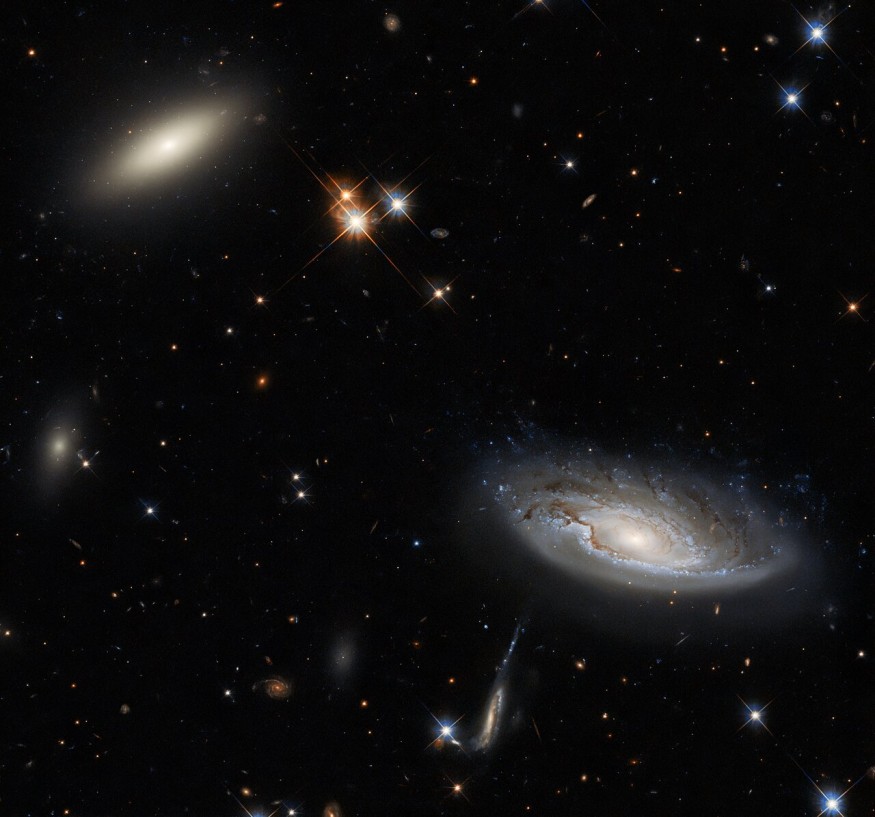A remix of what a black hole sounds like has been released by the National Aeronautics and Space Administration (NASA), and it is exactly what you would anticipate.
No one can hear you scream in outer space unless you're a colossal black hole.
However, the mesmerizing sound has undoubtedly captivated everyone as seen by the more than four million views it has received in the little more than 24 hours after NASA shared it.
And NASA has an answer to how the heck sound travels in the void of space.
Listen to What the Perseus Galaxy Cluster Sounds Like in This New NASA Black Hole Remix
The NASA Exoplanets team, which searches for planets and life outside of our solar system, tweeted: "The misconception that there is no sound in space originates because most space is a ~vacuum, providing no way for sound waves to travel."
NASA went on to say that the galaxy cluster has so much gas that it really produced sound.
The misconception that there is no sound in space originates because most space is a ~vacuum, providing no way for sound waves to travel. A galaxy cluster has so much gas that we've picked up actual sound. Here it's amplified, and mixed with other data, to hear a black hole! pic.twitter.com/RobcZs7F9e
— NASA Exoplanets (@NASAExoplanets) August 21, 2022
The Perseus galaxy cluster's central black hole is located there. When NASA discovered that pressure waves emitted by the black hole caused ripples across heated gas in the same cluster, indicating that the environment around was not a vacuum, it first learned about the noises it produced back in 2003.
However, NASA (per Huffington Post) noted that this pitch, 57 octaves below middle C, is one that "humans cannot hear."

ALSO READ : Nebula NGC 2392 Seems to Send a Creepy Message as Its Sonification Goes Viral; Can You Depict It?
But further sounds from the black hole have been picked up by a new sound system, making it audible for the first time.
Although NASA had to increase the noises' original frequencies by "144 quadrillions and 288 quadrillions."
A quadrillion has 15 zeros, for reference.
The noises that people hear on NASA's output are eerie and disturbing, which can keep someone awake at night, according to CNET's description of black hole sounds.
For the general public to hear and recognize the noises produced by the space oddity, NASA has just amplified the creepy sounds that a black hole naturally makes.
Sonifying Black Holes
But there are far more excellent ways to "sonified" black holes, Mashable wrote. The black hole in the heart of Galaxy Messier 87, or M87, which is around 54 million light years distant, has also been sonified by NASA.
The one shown below is the Event Horizon Telescope's first-ever picture of a black hole.
The track converts the wavelengths to various auditory tones using information obtained from numerous observatories, including the Chandra X-ray Observatory, NASA's Hubble Space Telescope, and the Atacama Large Millimeter Array (ALMA) in Chile.
RELATED ARTICLE : NASA Shares Black Hole Sonofication From Perseus Galaxy Resulting in Eerie Sound [Listen]
Check out more news and information on Space in Science Times.
© 2025 ScienceTimes.com All rights reserved. Do not reproduce without permission. The window to the world of Science Times.












